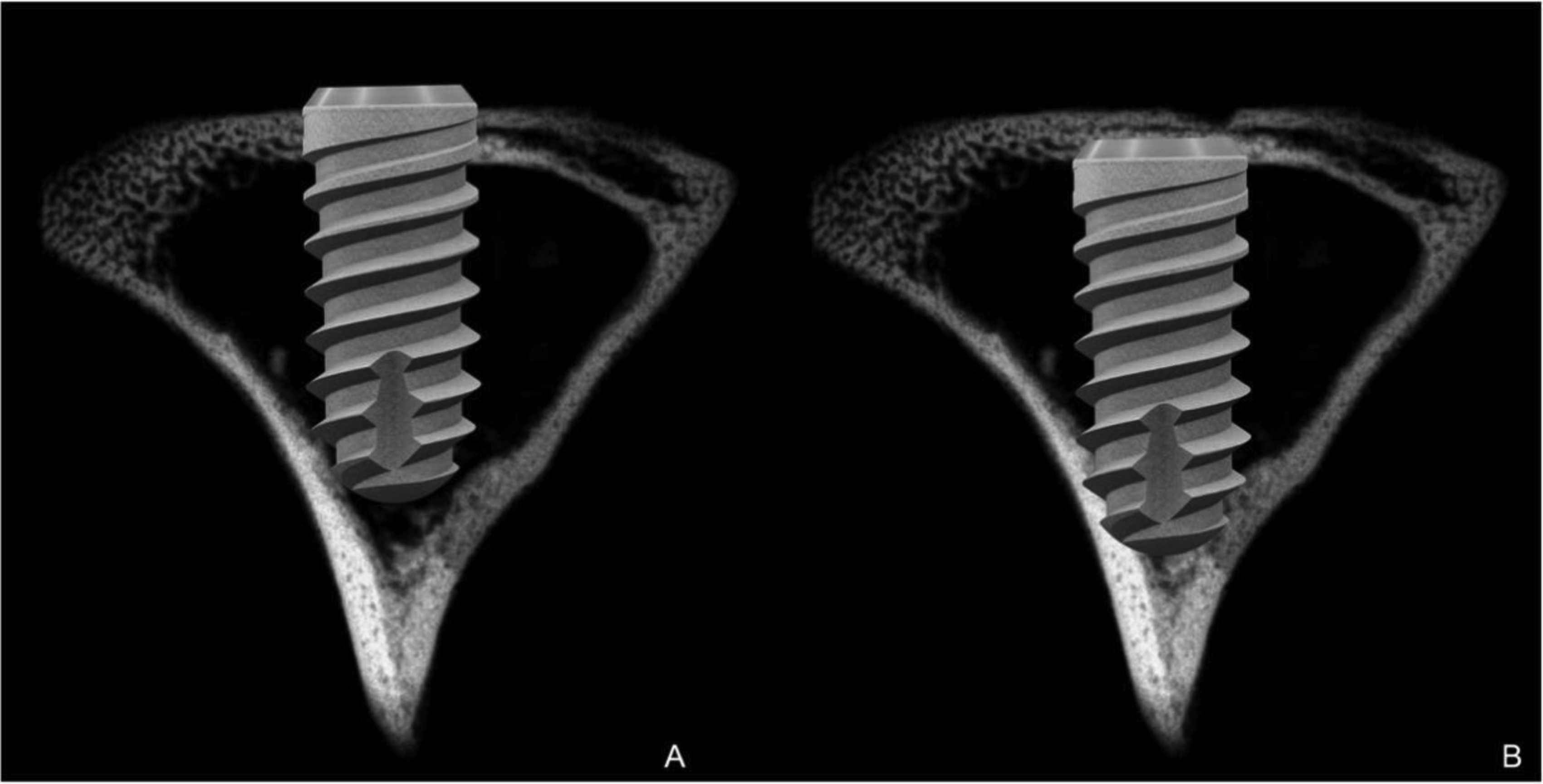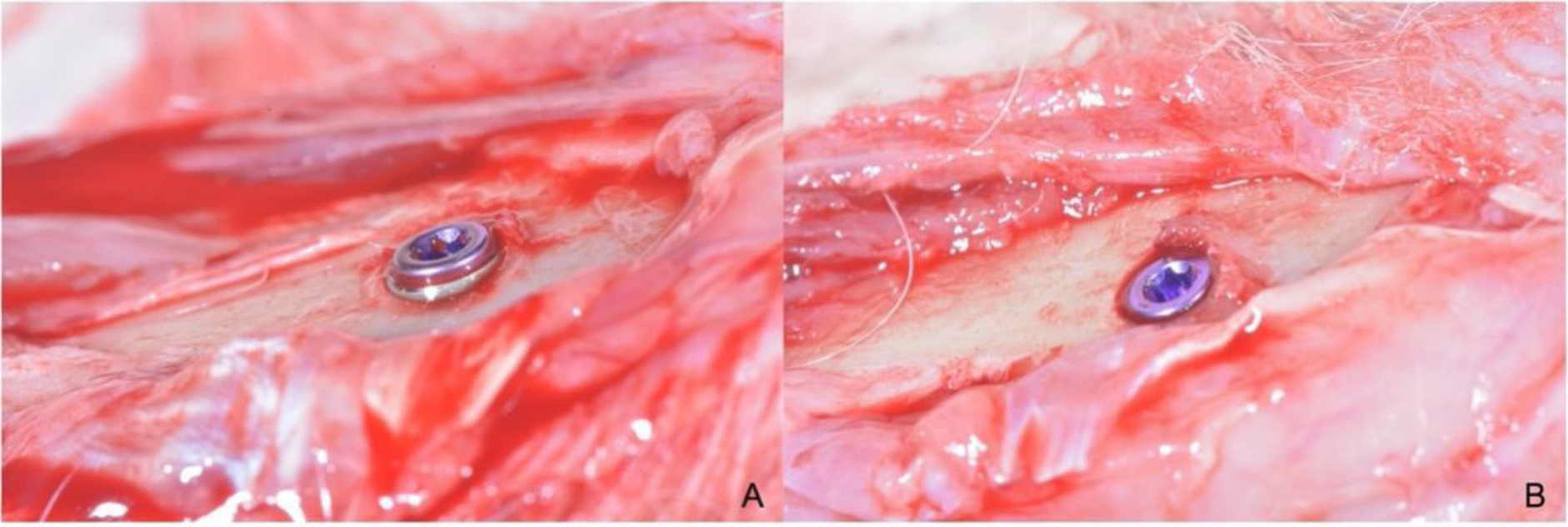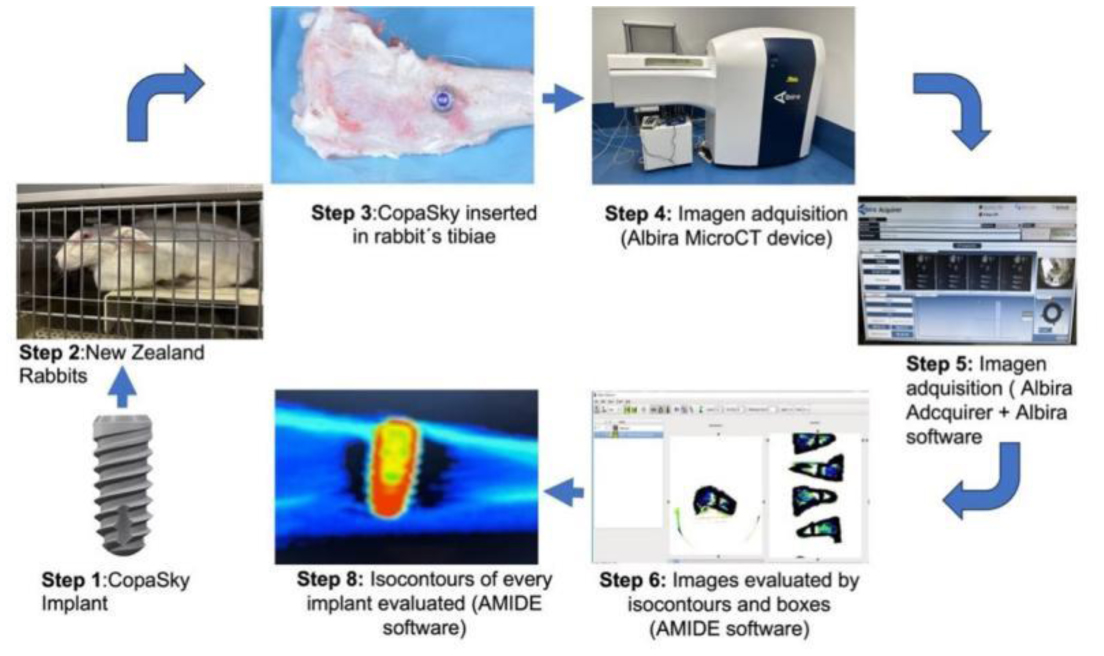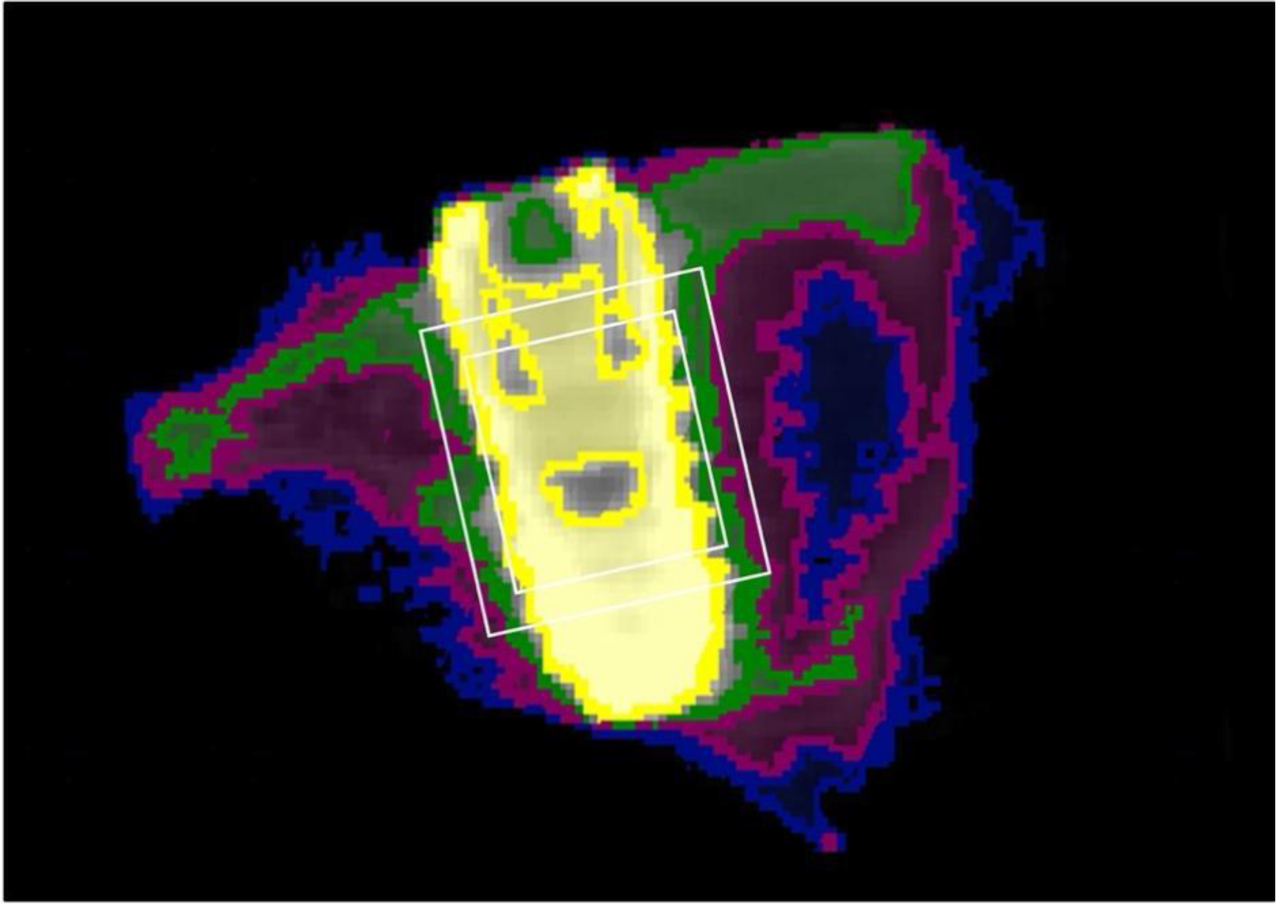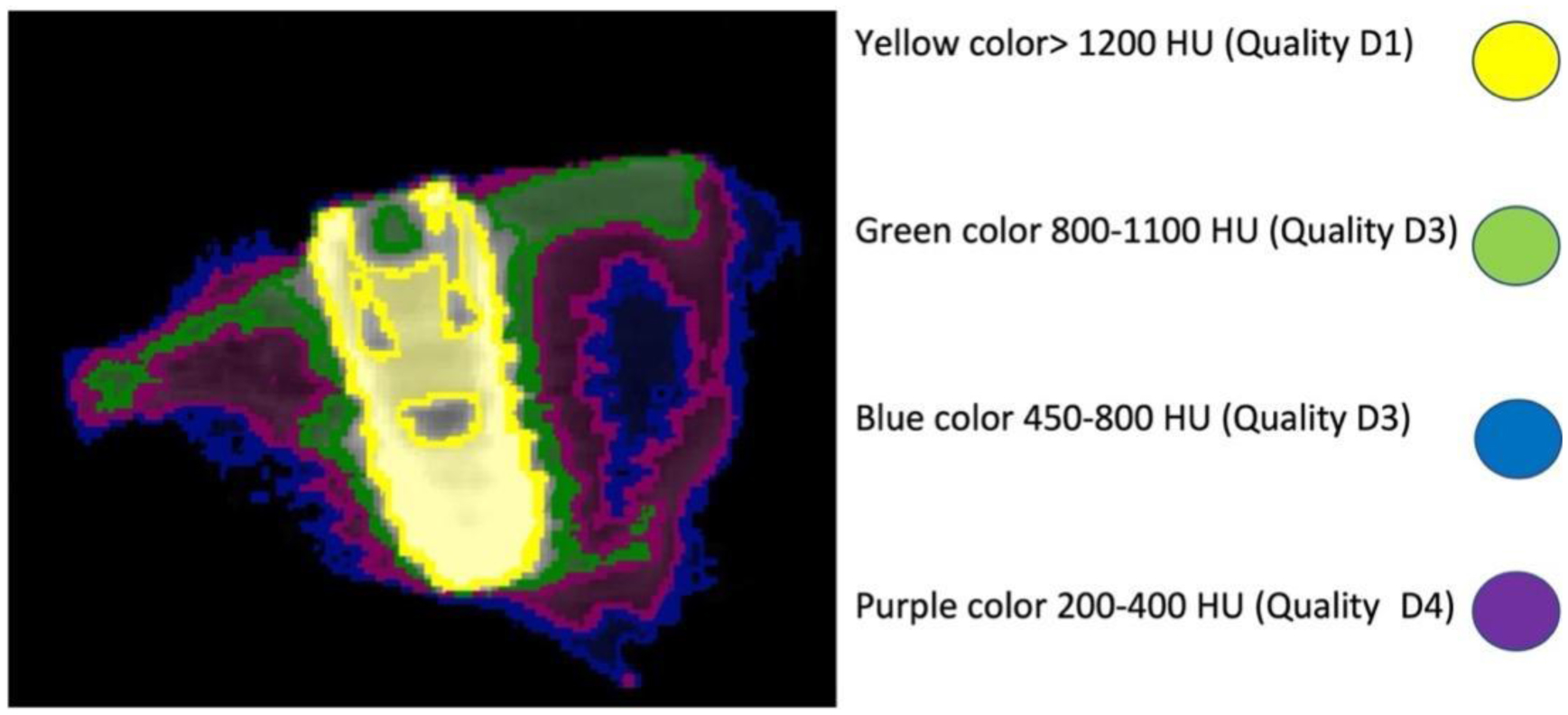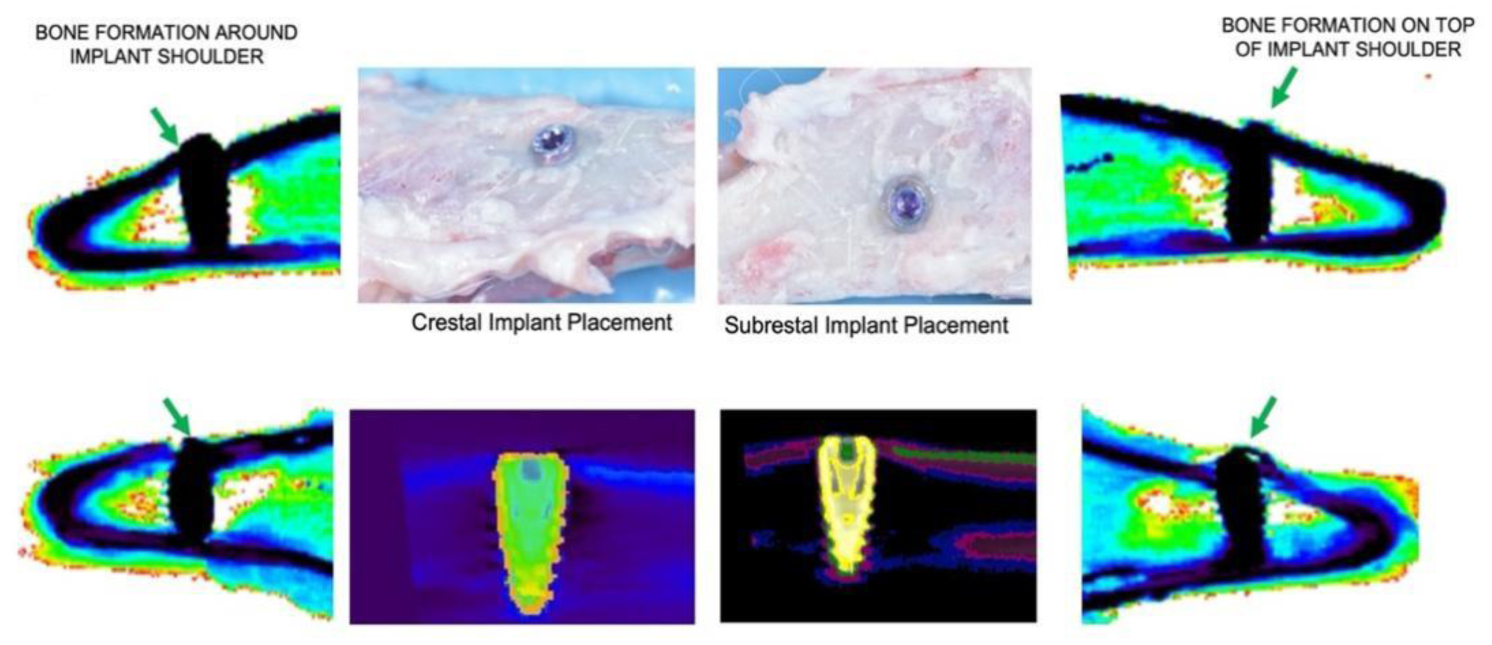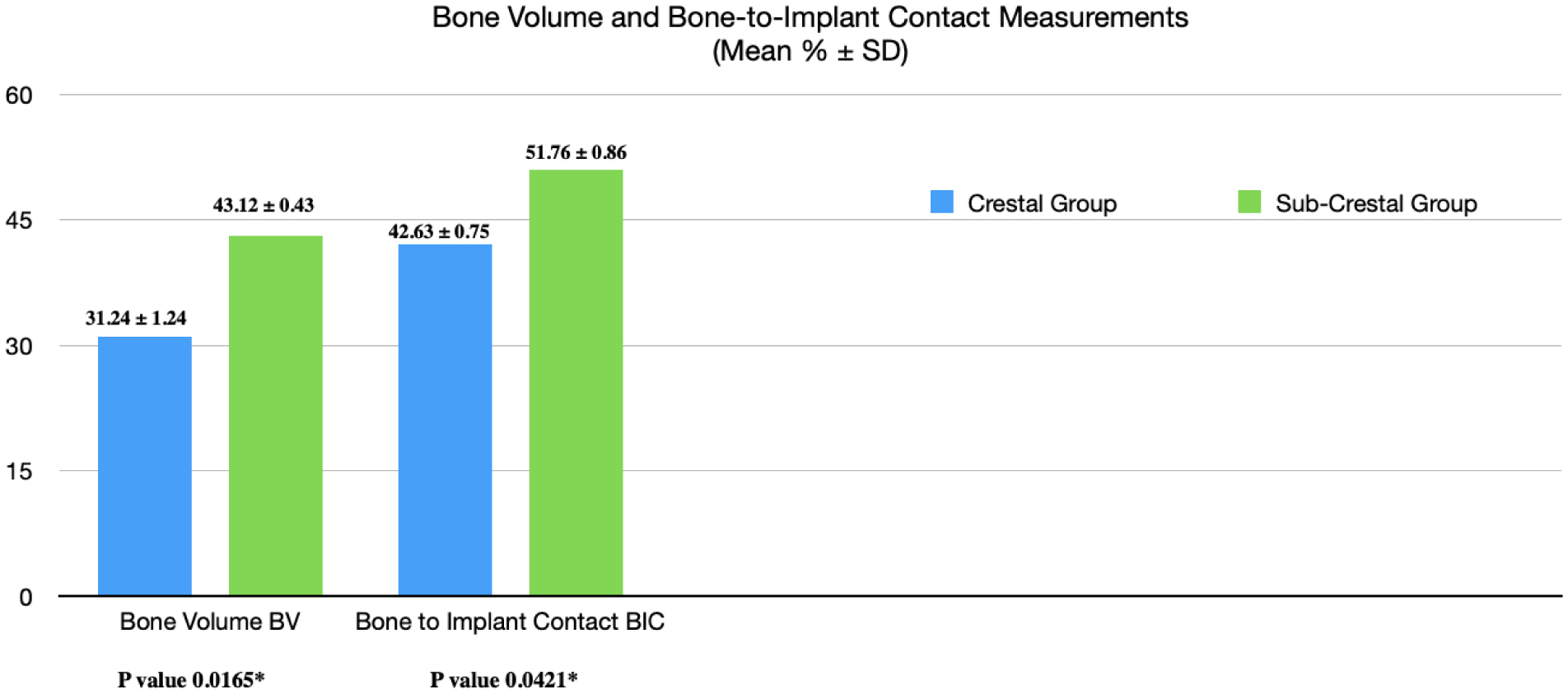1.
Introduction
Diagnostic images have significantly contributed to the advancement of biomedicine and the acceleration of diagnostic processes and treatment plans, thus improving the patients' quality of life [1]. The development of various capture techniques has required advances in their characterization and processing, thus consolidating a specific discipline in current medicinal practices. Digital image processing and analyses have included the development of various extraction methods of information by different types of programs that integrate digital information and develop a diagnosis and treatment plan [2]. Compared with other types of topographies, the use of microcomputed tomography (micro-CT) is the best method for the qualitative and morphological evaluation of bone and stiff structures within the body [3]. Therefore, the pictures acquired across computerized microtomography result from a volumetric decomposition of the body into either voxels or units. Each extracted voxel expresses the attenuation coefficients, also known as “raw data”. The raw data volumetric group is mathematically reconstructed, thereby obtaining a pixelated image [4],[5]. All data obtained are strongly related between the size and number of voxels, the resolution of the image acquisition, and the volumetric reconstruction of the object in a pixelated and multiplanar image associated with the loss of the data; for a definitive evaluation, they are introduced as errors within the system [5]. Related errors in radiographic interpretation alerted the scientists to errors in the radiographic interpretation when limited exclusively by the pixel value [6]. In order to reduce errors and false negatives, two programs were determined, such as a computer-aided detection (CAD) program, which is software that digitally analyzes all the images and estimates the expectation of distortion located on algorithms [7]–[11]. New strategies have been introduced to implant new biomaterials and implants in favor of bone formation, vascularization, and tissue stability [12]. Scarano et Al. confirmed that the most efficient approach for accelerating early osteogenesis and improving the bioactivity of titanium implant surfaces involves the use of collagen type I on the implant surface and could be clinically advantageous for shortening the implant healing period [13].
Micro-CT is a predominant technique used to improve imaging techniques, such as the evaluation of medullary and cortical bones, as well as evaluating bone formation and resorption in both 2D and 3D [14],[15]. Parrilla-Almansa and Cols presented a study combining a radiological study and a mathematical analysis of raw data obtained by micro CT, thereby adapting these analyses to the quality, density, and location of the implanted biomaterial in the evolution of its maturation over time. Because micro-CT is a non-aggressive technique, these data can be transported to other areas of radiology related to dental implants, thereby allowing us to see the bone's characteristics that form within the dimension of the implants [16].
2.
Materials and methods
The preliminary evaluation was performed as follows. Day zero equates to the day of the surgery, in which the crestal and subcrestal implants are placed within the tibias of New Zealand white rabbits. After four weeks, the animals are sacrificed and the micro-CTs are evaluated.
2.1. Animals
This study used six male New Zealand white rabbits in good shape (provided by the Animal Center, Murcia University), all weighing 2.59 ± 0.12 kg. The Bioethical University of Murcia Committee, Spain, authorized the research protocol number (A1320140404-15/04/2014), which followed guidelines validated by the Council on 22 September 2010 (2010/63/E.U.). Animals were quarantined and kept in rabbit cages, receiving appropriate veterinary care. Rabbits were provisioned with a granulated diet, watered ad libitum, and housed in individual cages. Cages were maintained at an ambient temperature of 21 ± 05 °C, with alternating 12 h periods of natural light and darkness. All animals were fasted overnight prior to the surgical operations. In our study, we chose a rabbit tibia model to evaluate the potential ability of coating surfaces to enhance bone formation in the presence of large medullary spaces.
2.2. Implants
Twelve titanium implants which were sandblasted and acid etched (Copa SKY; Bredent Medical GmbH & Co. K.G.), with a 3.5 mm diameter by 8.0 mm in length, were placed within the tibias of 12 rabbits (Figure 1). The surface of the Copa SKY titanium implants has three morphologic dimensions (Rugosity Ra ~2.2 µm). The backtaper is only microstructured by edging (Rugosity Ra ~0,36 µm). The platform around the abutments is machined (Rugosity Ra ~0,07 µm). Fifteen minutes before general anesthesia, the animals received an I. M. injection of an anxiolytic (0.5–1 mg/kg acepromazine maleate) (Calmo-Neosan, Madrid, Spain). The rabbits were anesthetized with an intramuscular injection of tiletamine/zolazepam (15 mg/kg) (Zoletil 50, Virbac, Madrid, Spain) and xylazine (5 mg/kg) (Rompun, Bayer, Leverkusen, Germany). Before surgery, the skin over the proximal tibia was shaven and washed with betadine (Meda Manufacturing, Burdeos, France). Ketamine hydrochloride (Ketolar; Pfizer, Madrid, Spain) was administered as an anesthetic at 50 mg/kg alongside amoxicillin as an I.M. pre-operative antibiotic (Pfizer, Barcelona, Spain). Additionally, 3 mL of 2% lidocaine (Normon, Barcelona, Spain) was administered by an I.M. injection in the surgical area of each leg, alongside 0.01 mg/mL of adrenaline.
2.2.1. Study groups
The study animals were split up into two groups (n = 6) according to the position within the tibia: Copa SKY crestal (Group A) and Copa SKY sub-crestal (Group B). All rabbit tibias were used for scanning with Micro-CT (Figure 2).
2.2.2. Surgical procedure
The tibial approach was performed in the internal area of each tibia, 7 millimeters below the anterior tibial tuberosity. A linear 20-millimeter cut was performed at the internal area of each rabbit tibia. A full-thickness flap was elevated to the uncovered bone area, utilizing the tibial plateau as a reference point. Consequently, the perforation of the cortical bone was carried with implant drills at approximately 3.5/4.0 mm in diameter and 8 mm in length (Bredent Medical GmbH & Co. K.G.) under profuse irrigation, and each tibia received one implant (Figure 3A,B). The implant diameter and length were the same for all implant groups (3.5 mm diameter and 8.5 mm length). The study was randomized, placing one implant in each tibia to protect and prevent bone fracture (http://www.randomization.com).
The Copa SKY implants were crestally exposed only 1 mm over the cortical bone; for the other group, the Copa SKY implants were placed 1mm sub-crestally (Figure 3A,B). The mucoperiosteal flaps were repositioned and sutured with 3-0 silk (Laboratories Lorca Marin. Lorca, Murcia, Spain). Penilicilin (0.1 mL/kg intramuscularly) was administrated at the end of the surgery, as well as 0.05 mg/kg ibuprofen subcutaneously every 12 h after the operation, for a total of three days.
2.2.3. Micro-CT sample preparation and analyses
All biopsies were mended in 10% buffered formalin and sent to the complex tissue laboratory of the Biomaterials Clinical-Histological Research Association (BioCRA). The specimens were processed for histology, de-hydrated, and then stuck in methacrylate resin. After polymerization, the models were observed with a lofty-resolution micro CT system using an Albira trimodal preclinical scanner (Bruker®, Massachusetts, U.S.A.); an image was obtained with a resolution of less than 0.05 mm and was reconstructed in 3D (Figure 4). The specimens were scanned in high resolution with an x-, y-, and z-axis resolution of approximately 20 µm. The voxel size was 15 × 15 × 15 µm3. The scanning time for each specimen was approximately 12 h. A morphologic analysis was performed by an accurate observation of the 2D sections and the 3D reconstructions. The morphometric analysis enabled the calculation of actual contact implant to bone (B.I.C.), expected implant-cone contact (E.B.C.), bone volume (B.V.), and standard morphometric indices. Bone-to-implant contact is a concept calculating the amount of the implant surface directly attached to mineralized bone without soft tissue interposition. B.I.C. was calculated by micro-CT (automatic measurement of bone density). The E.B.C. is a virtual value, which was calculated by superimposing the implant thread profile over the bone image at various distances from the actual implant site (1.0, 1.25, or 1.5 mm), followed by counting the quantity of bone in contact with the implant surface, as described by other authors [17],[18].
Measurements were calculated using a medical imaging data examiner (Amide, UCLA University, LA, U.S.A.). A global description of all statistical values was made, including the mean, standard deviation, median, minimum value, maximum value, size of the volume of interest (VOI) in mm3, voxel fraction, and total voxels. An analysis of both the biomaterials and the biopsies was performed, thereby calculating the percentages of Hounsfield units (HU) that characterized the samples by determining the predefined composition, type of density, and volumes and creating individual iso-contours following the subjective classification of bone quality, as described by Misch in four types of bone density differentiation: D4 (200–400 HU), D3 (450–800 HU), D2 (800–1100 HU) and D1 (>1200 HU). The bone volume in this area was expressed as a percentage of the total volume of the region of interest (ROI) as a 5 mm square area in the middle of the implant covering the mesial and distal inner and outer areas of the threads (Figure 5). The hard tissue cores used were scanned by an Albira Micro-Ct, thereby obtaining an image with a resolution of less than 0.05 mm and was reconstructed in 3D (Figures 5 and 6). The acquisition parameters are summarized in Table 1.
In this study, 200 HU was the minimum density value selected for the D4 density. The results indicated the imparted dose at the surface level of the current (0.3 or 0.4 mA) and the voltage (44 kV) for best, excellent, and standard image acquisition modalities [19].
The measurement method developed is presented as follows.
Two quantitative parameters were estimated (Figure 3):
1-BIC: The implant bone contact around and along the entire length of the implant is measured, starting from the neck to the tip of the implant.
2- Percentage of peri-implant bone area (B.V.): The amount of bone mass around an implant is analyzed by a rectangular measurement ROI in the middle of the implant. B.V. measurements are based on quantifying the specified loose tissue in the ROI around all implants. All measurements were performed on both sides of the implant.
2.2.4. Statistical analysis
All statistical analysis was performed using the GraphPad Prism 6 software (GraphPad Software, Inc., San Diego, CA, USA). The Student t-Test was used to determine the statistical significance between the two groups of crestal and sub-crestal placements. A power analysis of 0.9 is connected with a 90% detection level. The level of significance for the analysis was set at p ≤ 0.05.
3.
Results
All wounds were cured without complications, and the animals survived at four weeks of healing. The dental implants were retrieved after four weeks of healing. Micro-CT evaluations showed a high amount of bone around all implants placed within the tibias of the rabbits. Bone formation significantly increased around the Copa SKY implants, mainly in the implants placed sub-crestally due to the position and surface of them. The most frequent density found among the implants was a medullary bone formation that surrounded the implant; the D3 (less cortical bone with high medullar bone) density was the most common type in all implants (Figure 6). This kind of bone implant stimulates bone formation because of an increase in calcium deposition onto the bloody bone marrow. One can understand the micro-CT by utilizing colors to classify the bone densities, as we can see in Figure 6.
3.1. Micro-CT findings
One of the most critical findings in this preliminary study of the rabbit tibias was that most of the implants placed crestally to the bone were situated above the shoulder of the bone. The implants were placed in such a way that the crestal of the bone covers not only the shoulder, but also the closing cap of the implant. The micro-CT examination exhibited excellent osseointegration among all the implants placed at crestal and sub-crestal locations. The 3D model analysis revealed a mean B.V. of 31.24 ± 1.24% in crestal implants compared with the 43.12 ± 0.43% in sub-crestal implants (Table 2). The mean B.I.C. in the sub-crestal group was 51.76 ± 0.86%, as compared to 42.63 ± 0.75% in the crestal group (Figure 7). The sub-crestal implants showed a significantly greater volume than the crestal implants. The bone-to-implant contact was significantly higher in the sub-crestal group compared to the crestal group (Figure 8).
4.
Discussion
Numerous companies have developed an implant surface that improves the bonding effect to the bone due to the length of the threads and the connection on the coronal surface. The design of a smooth-surfaced implant in the neck allows the bone to grow over the neck, thus avoiding crestal bone resorption [20]. This research was performed by analyzing the complete osseointegration of dental implants by a micro-CT assessment, which reveals improved osseointegration in the implants placed sub-crestally. The micro-CT scanner was designed to evaluate small animals based on pixelated detectors, which is widely used to evaluate the utilization of different implants and biomaterials in small animals [21]. These previous studies coincide with the findings in our experimental animals, thus allowing us to evaluate the bone quality found in bone grafts and dental implants. For example, Al Deeb and coworkers demonstrated significantly improved BIC and BV percentages for TM implants using a micro-CT evaluation [22]–[26]. Other studies related to micro-CT can also demonstrate the disruption of osseointegration in heavy smokers due to nicotine, thereby reducing the bone volume acting on super-hydrofilic implant surfaces [27]. These observations made in the animal studies coincide with previous clinical studies by other authors. In these studies, the bone response that occurs in the animals coincide with the attribution of the increase in the B.I.C. because rabbit tibias ensure the placement of the implants in a bi-cortical manner [28],[29]. These animal models offer the opportunity for observing implant stability and histological observations, thereby allowing researchers to measure the BIC and BV with different surface coatings [30]. One of the mechanisms that can explain this integration phenomenon related to the damage produced in the tibia and the heat generated when we place the implant has been published in previous investigations [31]–[33]. A delayed implant placement may be a more effective method of achieving osseointegration, thus leaving approximately 14 days after cavity preparation with the implant burs. Futami et al. demonstrated that the micro space that exists between the surface implant and hard tissue allows for the dissemination of osteogenic cells that come from the bone spaces to the implant surface [34]. The limitations of this study are due to the animal model used. Other species such as rodent primates allow for the rapid turnover of changes that occur in the bone much quicker than in humans [35],[36]. The placement of implants in healed bone or immediate implants for extraction is vital to their neck, which can either stimulate or reabsorb the bone, thus allowing for an adequate establishment of the biological width [37]–[42]. Many of our studies have been related to the immediate post-extraction of dental implants placed either 1 or 2 mm underneath the bone crest, especially in the experimental animals who underwent 12 weeks of healing, in which the reabsorption of these crestal walls of bundle bone does not independently influence the implant position [43]. Some studies place the implants 1 mm under the bone walls and reduce the platform immediately, which act in a gap reduction and biologic width protection over the neck of the implant, thereby serving as an umbrella for the bone surrounding the implant [43]–[48]. Many authors describe that the position of the implant does not influence the changes that occur in the bundle bone; however, these changes do occur, and have a significant influence on the soft tissue, greatly depending on the depth of implant placement and the thickness and type of gum of abutment that is placed on the implant [49]. The micro-CT application can demonstrate mineral bone density formation close to the implants treated with different surfaces, thereby improving the optimal integration of implants in the rabbits' long bones [50]–[52]. The use of micro-CT imaging techniques and immunohistochemistry are excellent tools for this objective, since they both enable the quantitative assessment of bone microarchitecture and intercellular interaction [53]. Recent studies demonstrated that collagen type I and augmented wettability accelerates early osteogenesis and improves the bioactivity, such as Autologous Platelet Liquid (APL) on titanium implant surfaces [54]. Other authors suggest that implant surface modifications can be a new alternative to the administration of systemic drugs such as calcium-doping and fibrinogen-conditioning, thus combining local antibiotic therapy with a surface treatment with a proven efficacy, improving the integration of the titanium implant to the bone [54],[55]. However, other authors found that placing implants at the crestal level increased the implant-bone contact, especially in cylindrical implants [49],[56]. Our results demonstrated that micro-CT is a valuable method for the 3D assessment of bone skeleton around implants [57]. The micro-TC PET/SPECT/CT is proposed to evaluate small animals, thereby obtaining high-quality images for studies, decreasing the cost, the number of animals, and the 3R [20]. Micro-CT is a fundamental diagnostic tool after the implantation of biomaterials, allowing us to assess the density of the bone that forms around and above the head of the implants.
5.
Conclusions
Sub-crestal implants allow bone formation on the neck, thereby stimulating bone growth compared to crestal implants. The crestal position endures bone to grow around the neck of the implant, unlike sub-crestal implants, where the bone grows above the neck and the cover screw of the implant. This is mainly due to the sub-crestal position stimulating the surrounding tissues, thereby increasing the formation of collagen and neo-angiogenesis on the neck of the implant. In addition, this increases implant-bone contact and the bone volume that adheres to the implant, thus favoring healing and osseointegration.
Use of AI tools declaration
The authors declare they have not used Artificial Intelligence (AI) tools in the creation of this article.
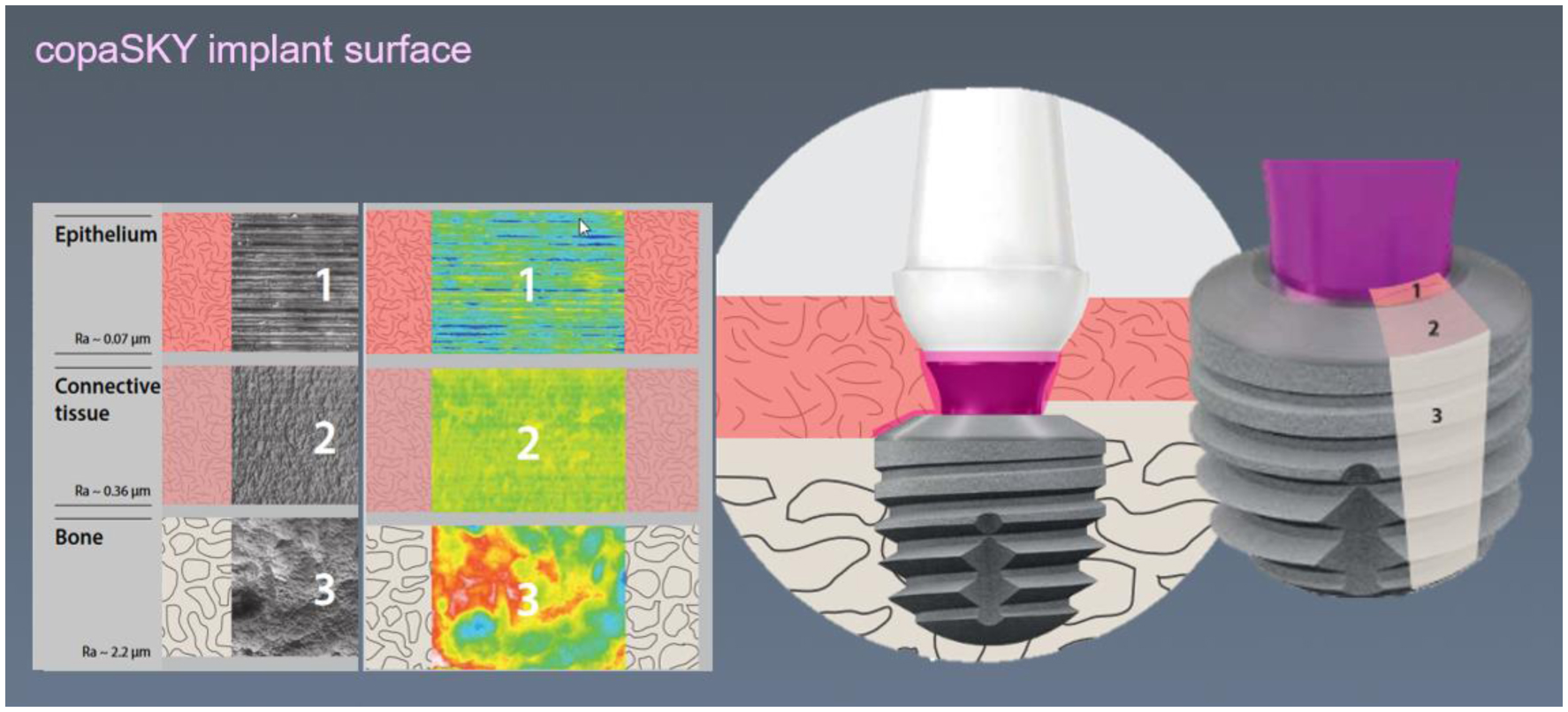









 DownLoad:
DownLoad:
